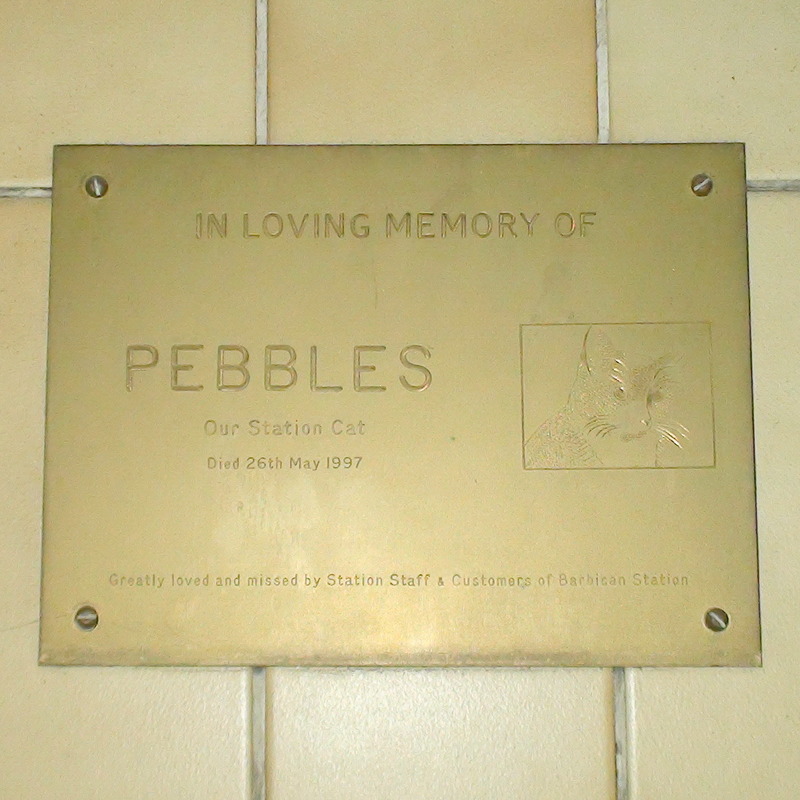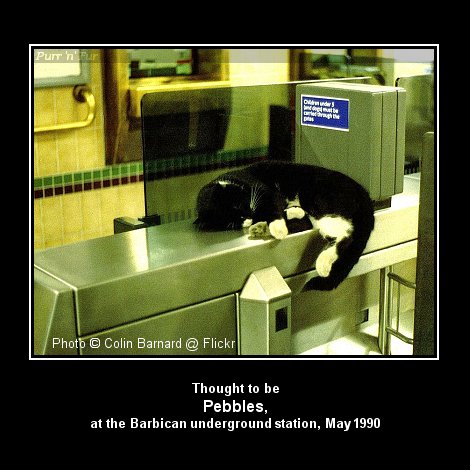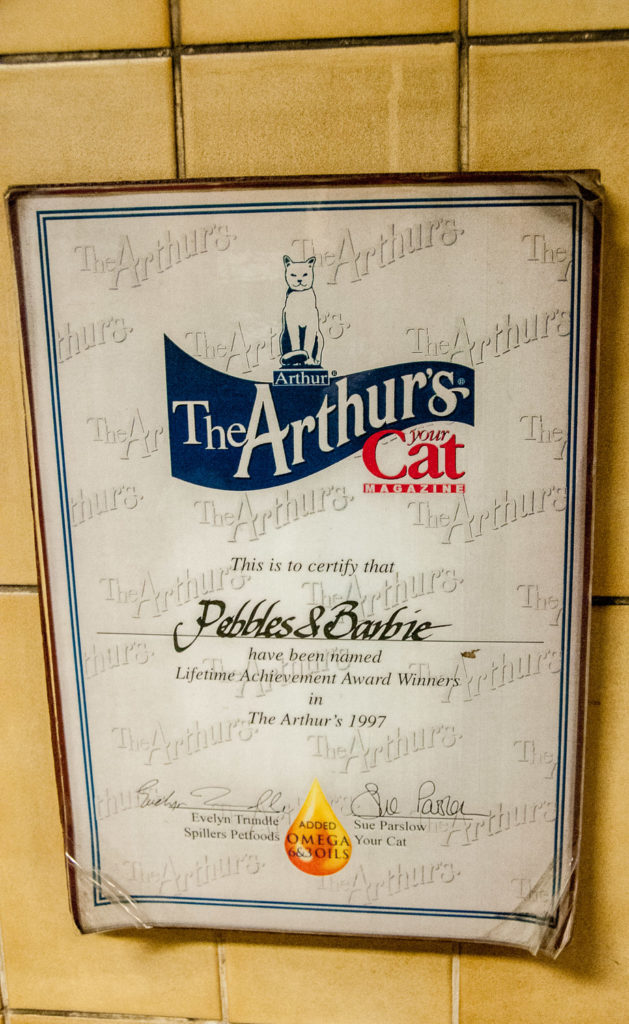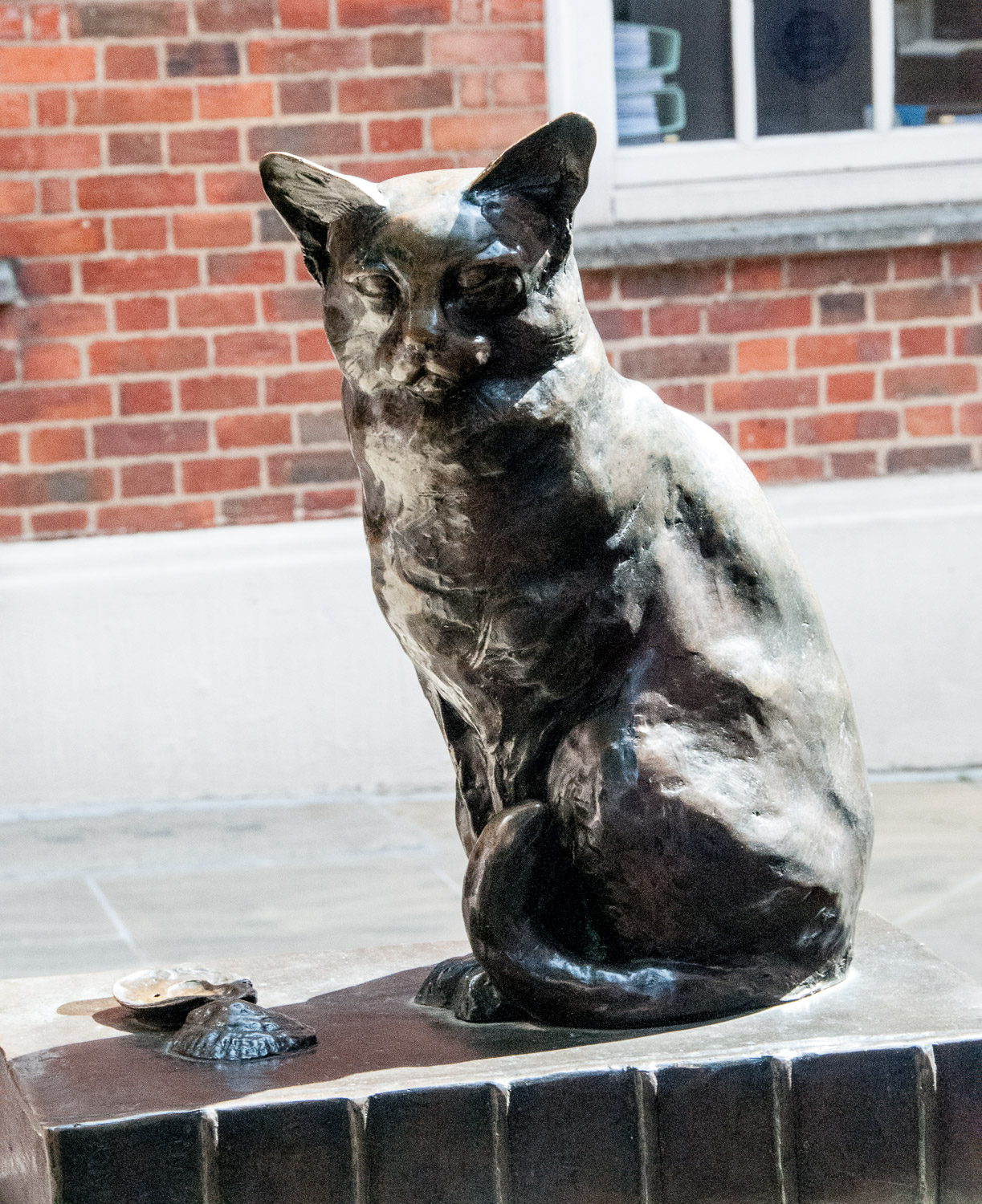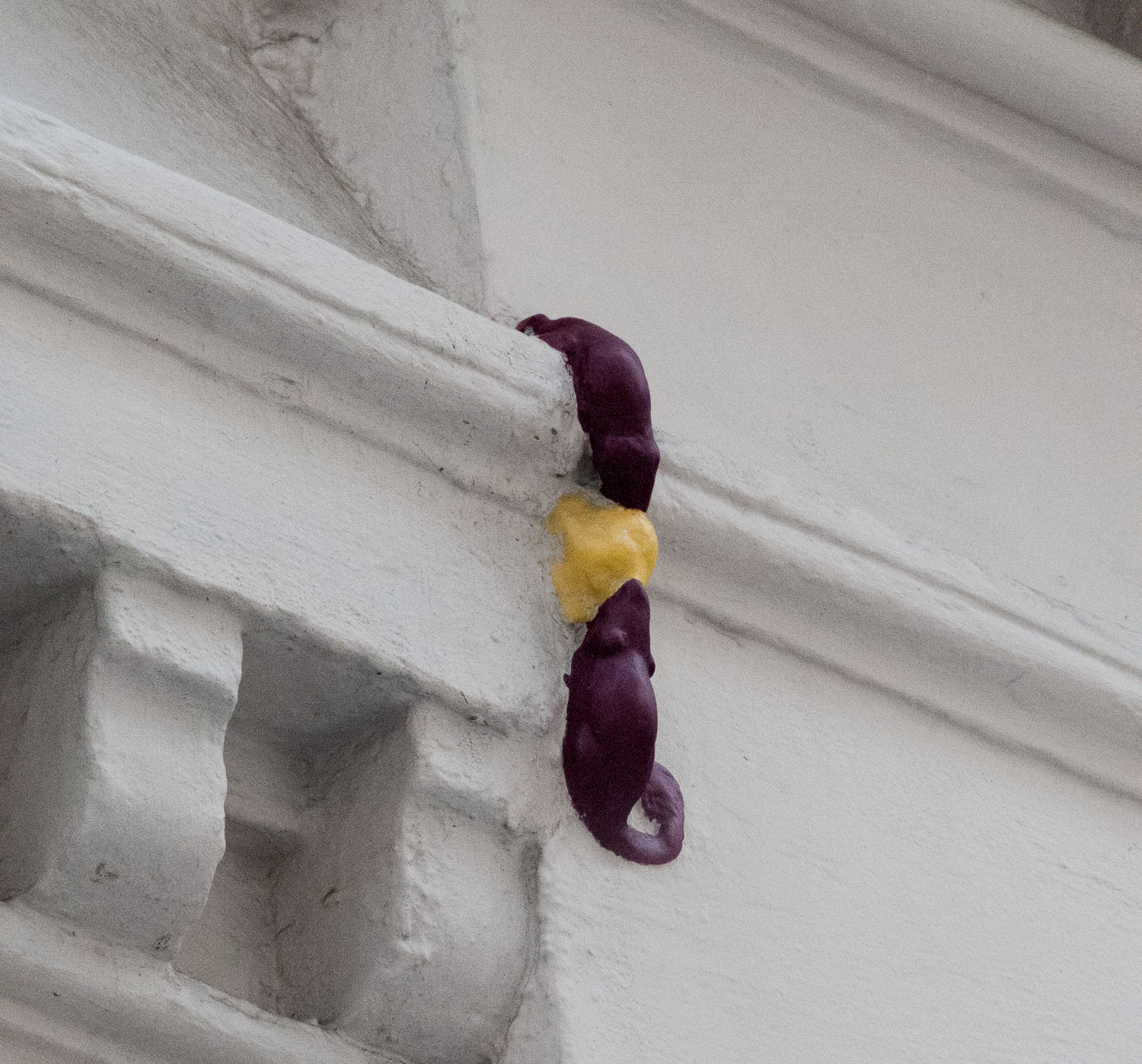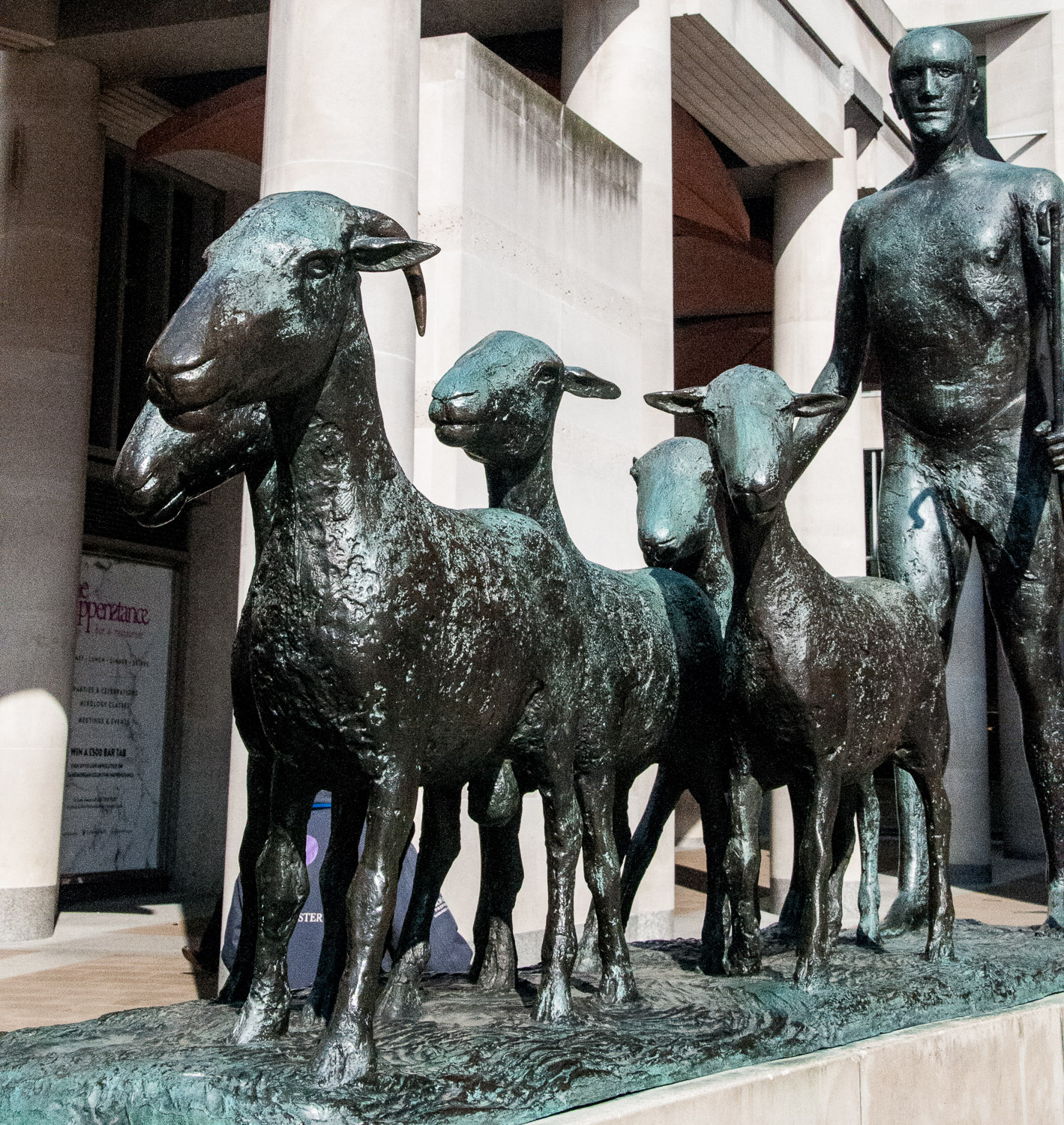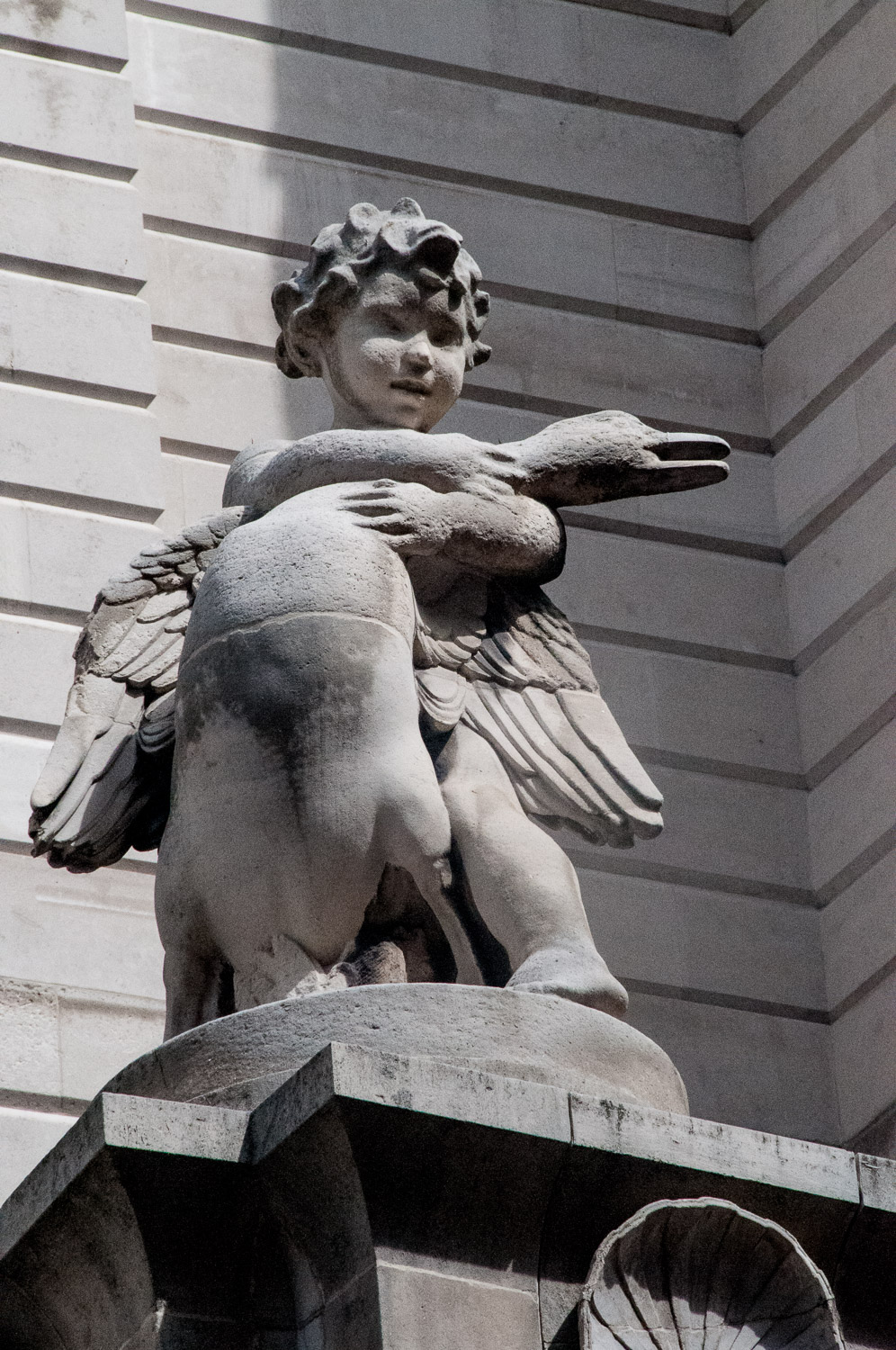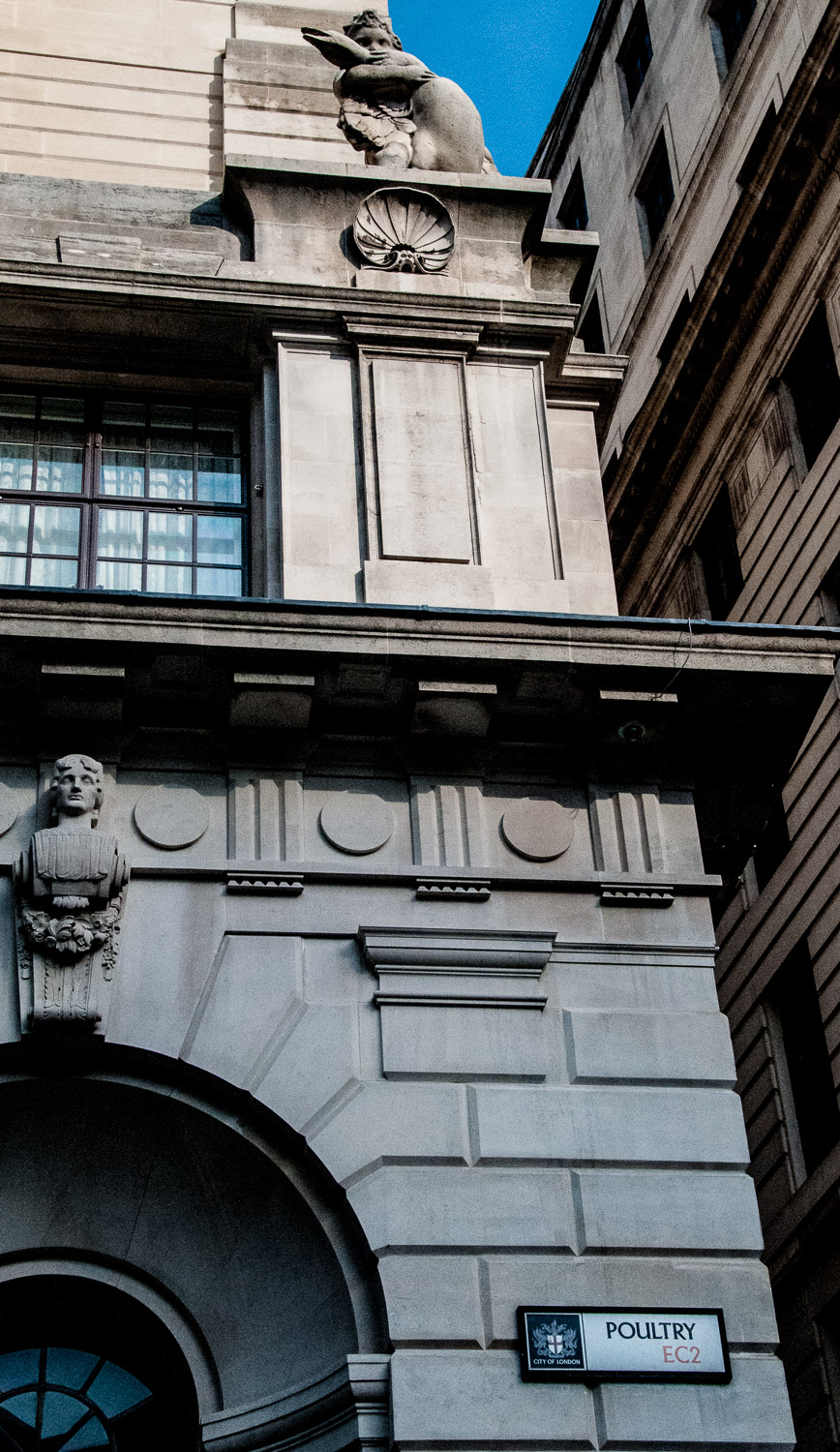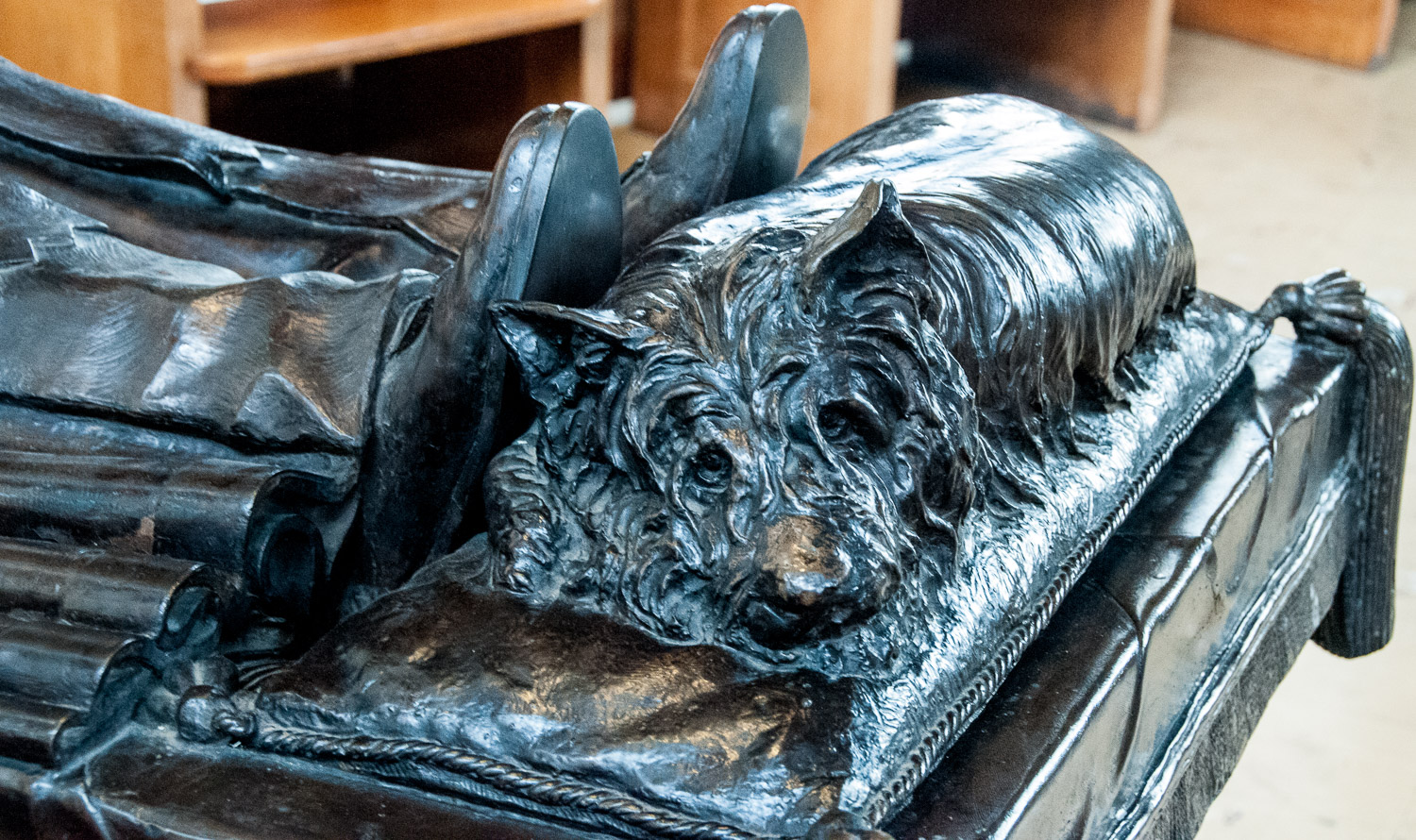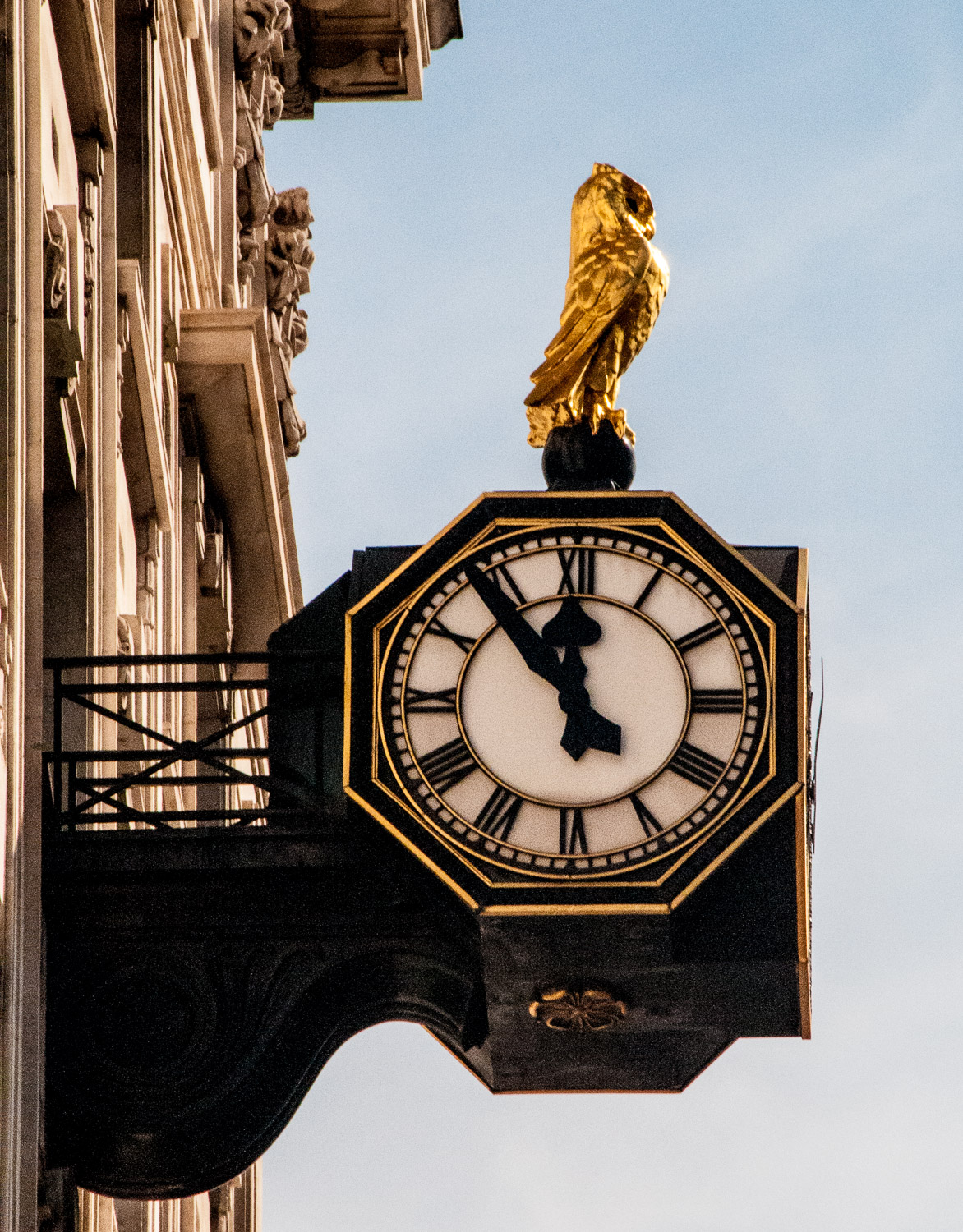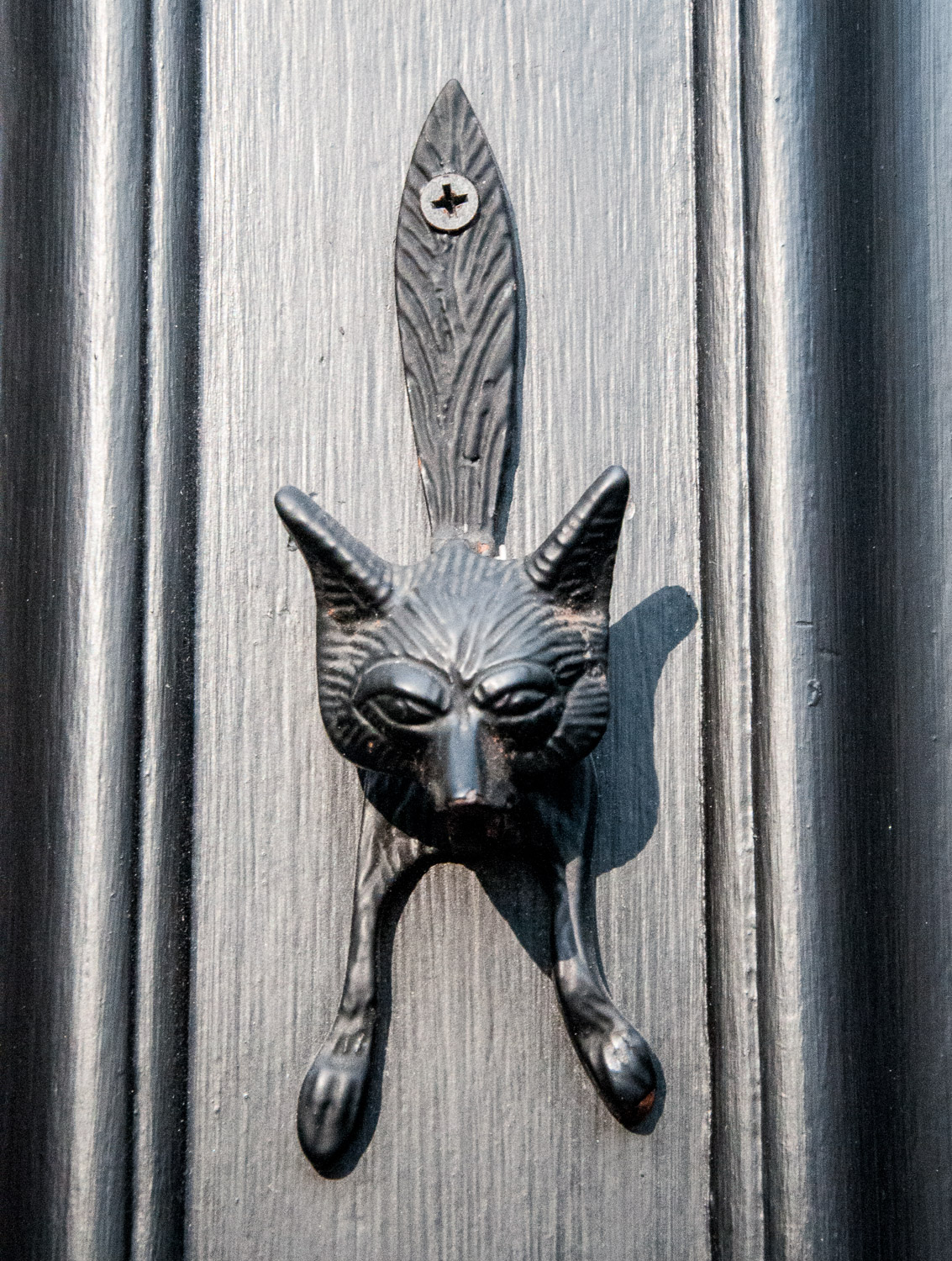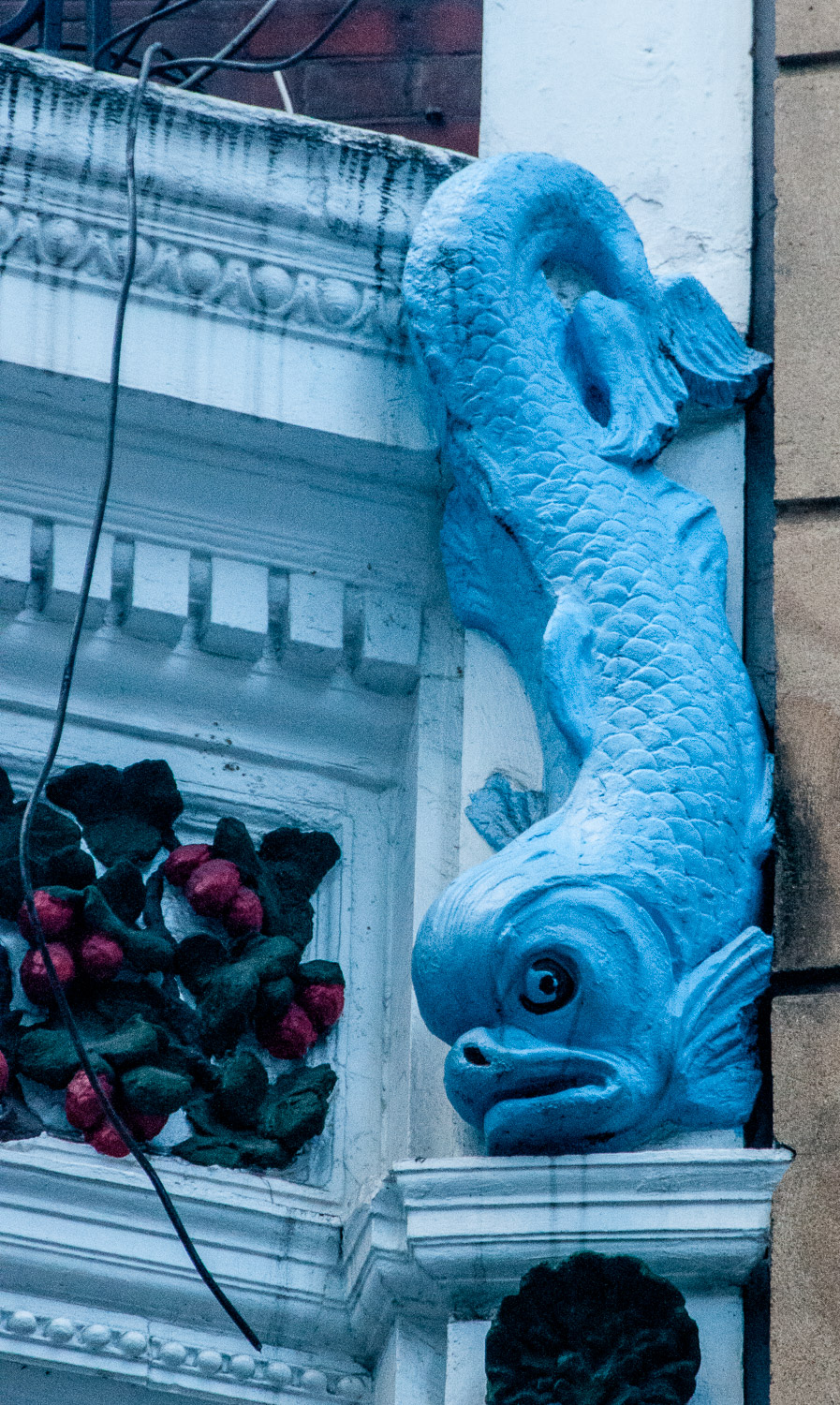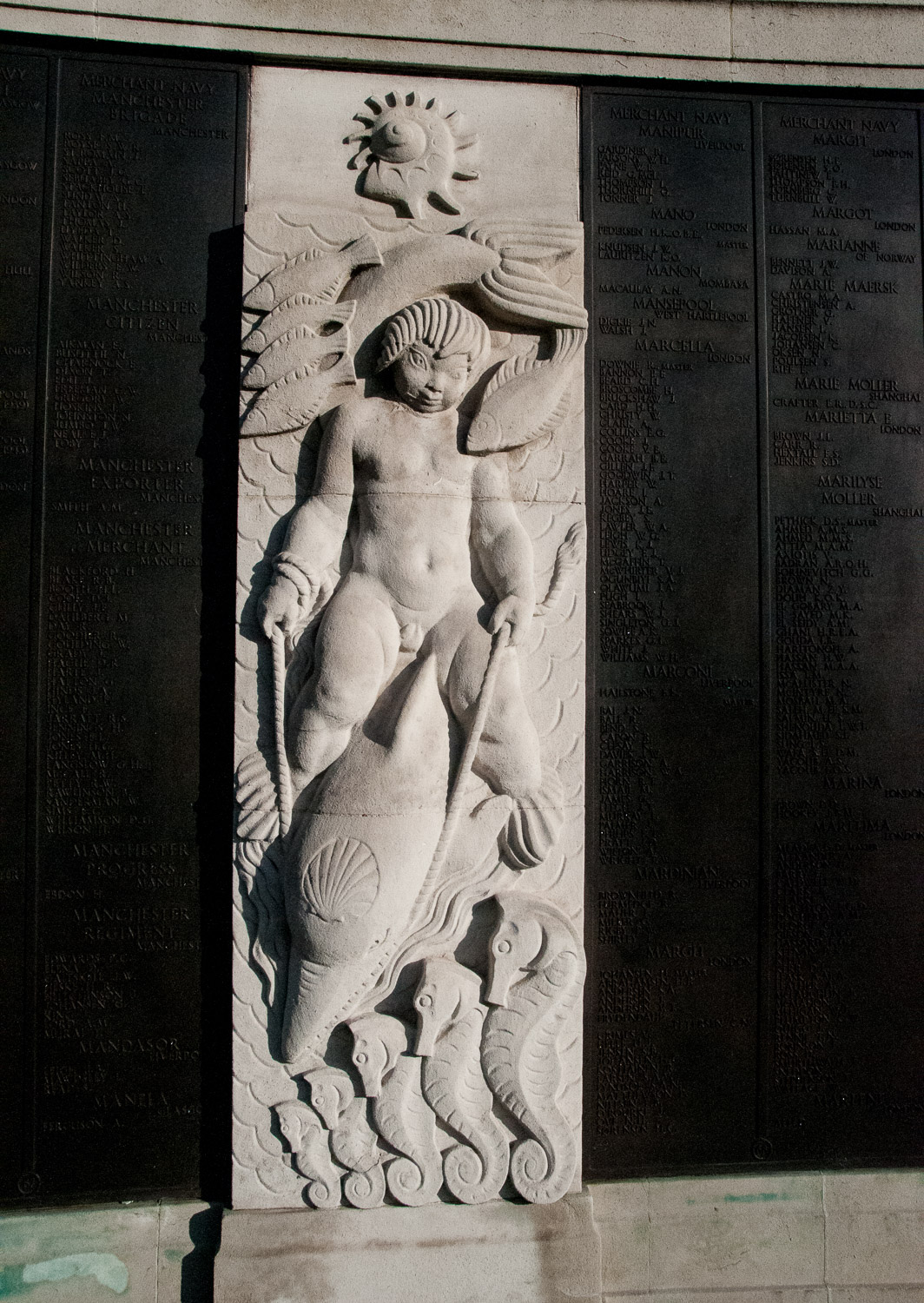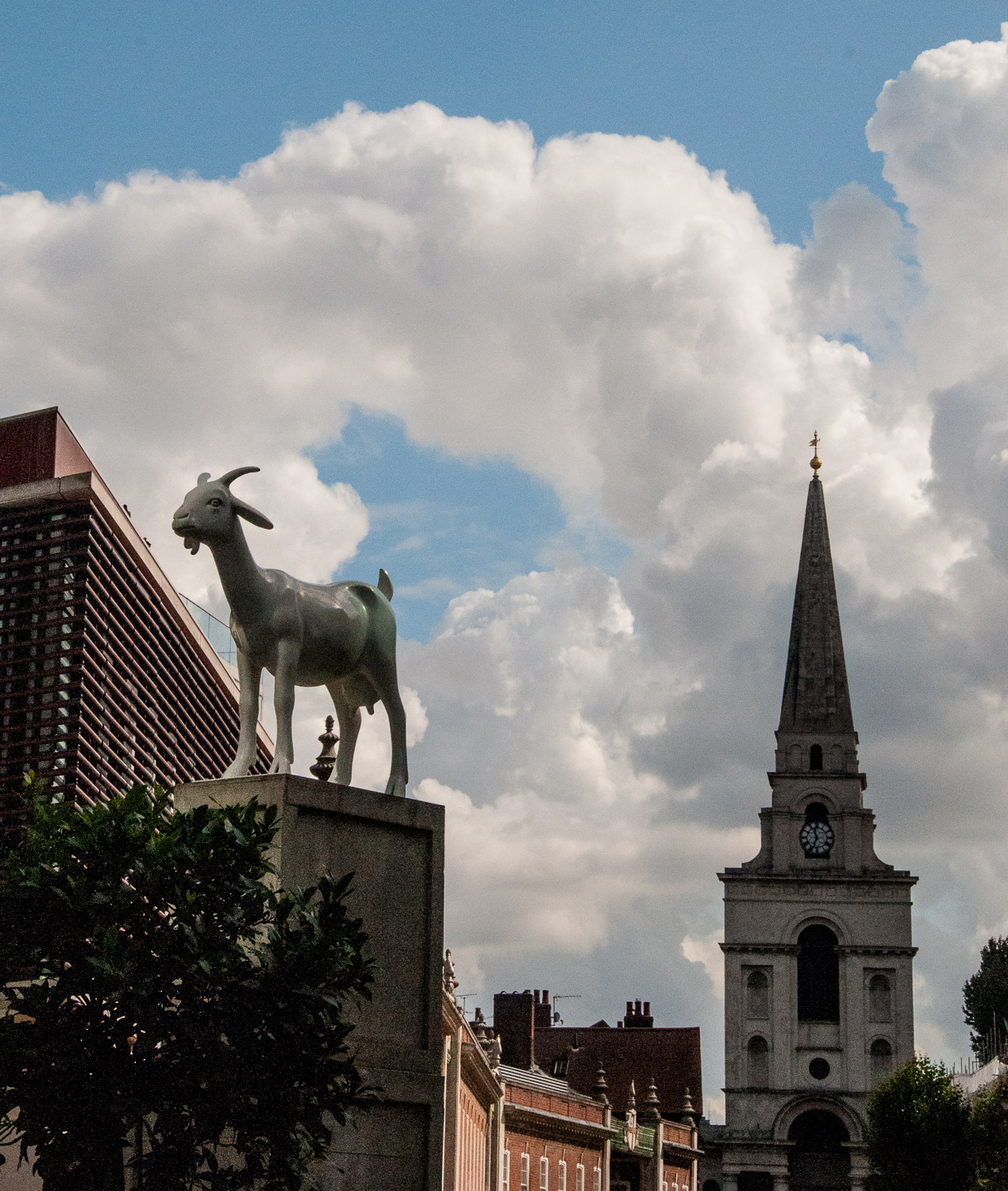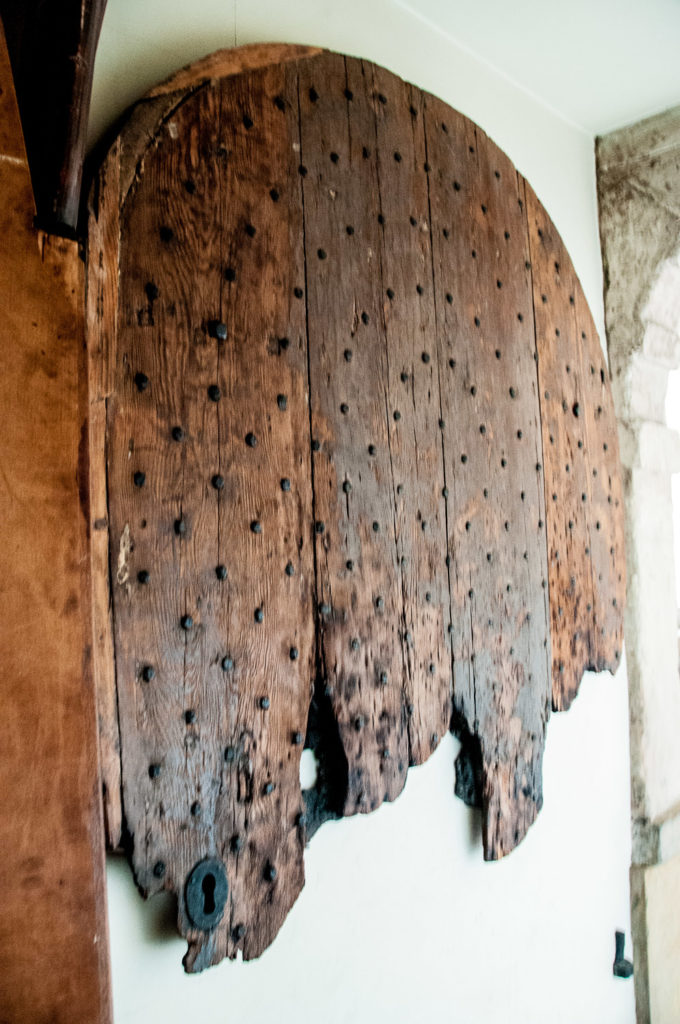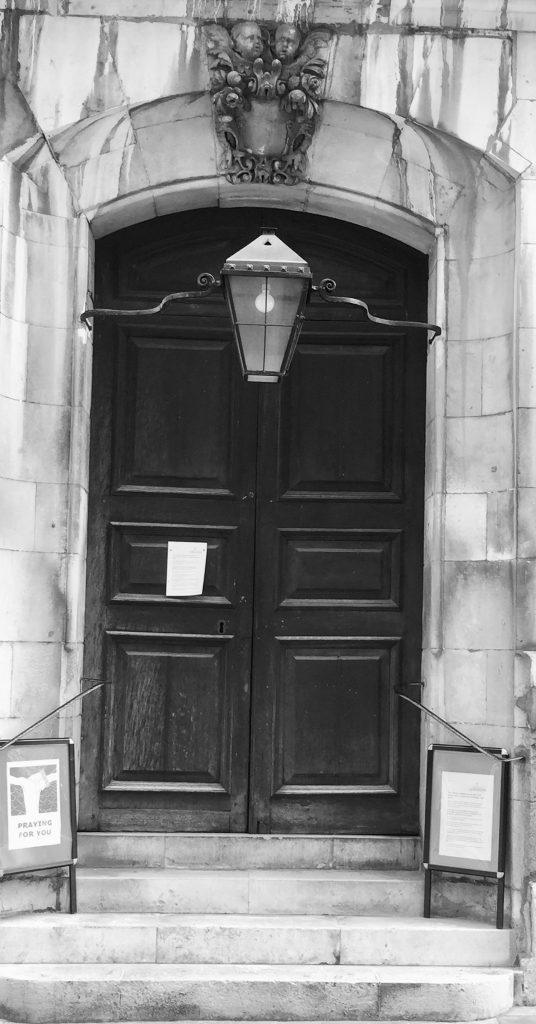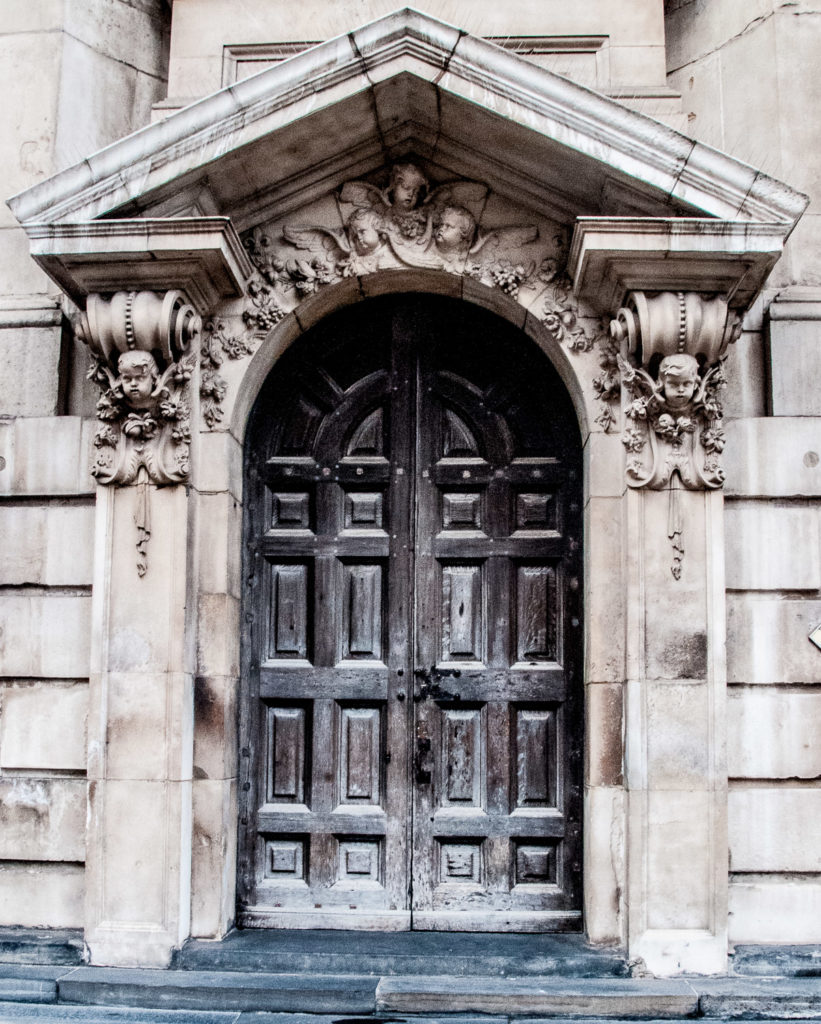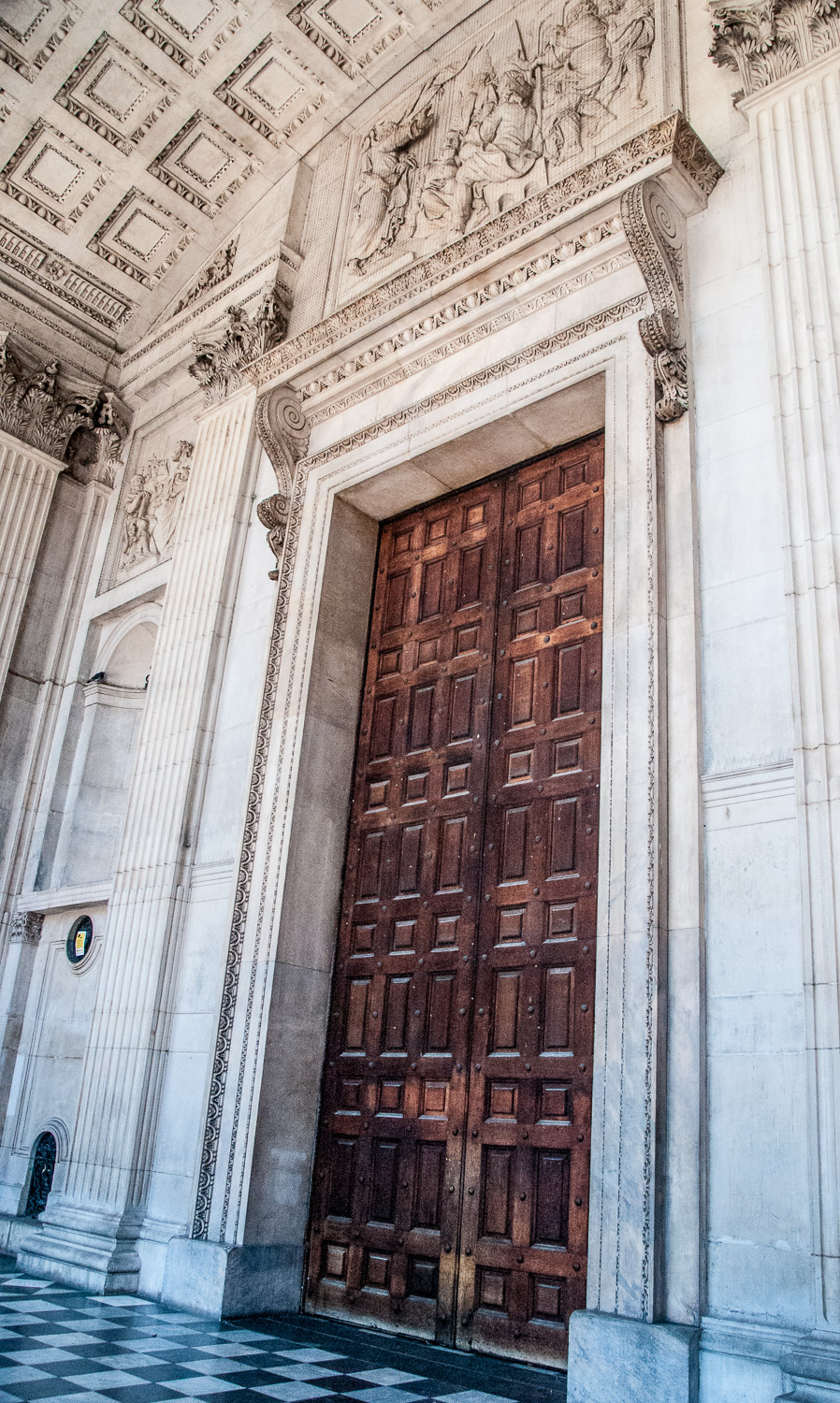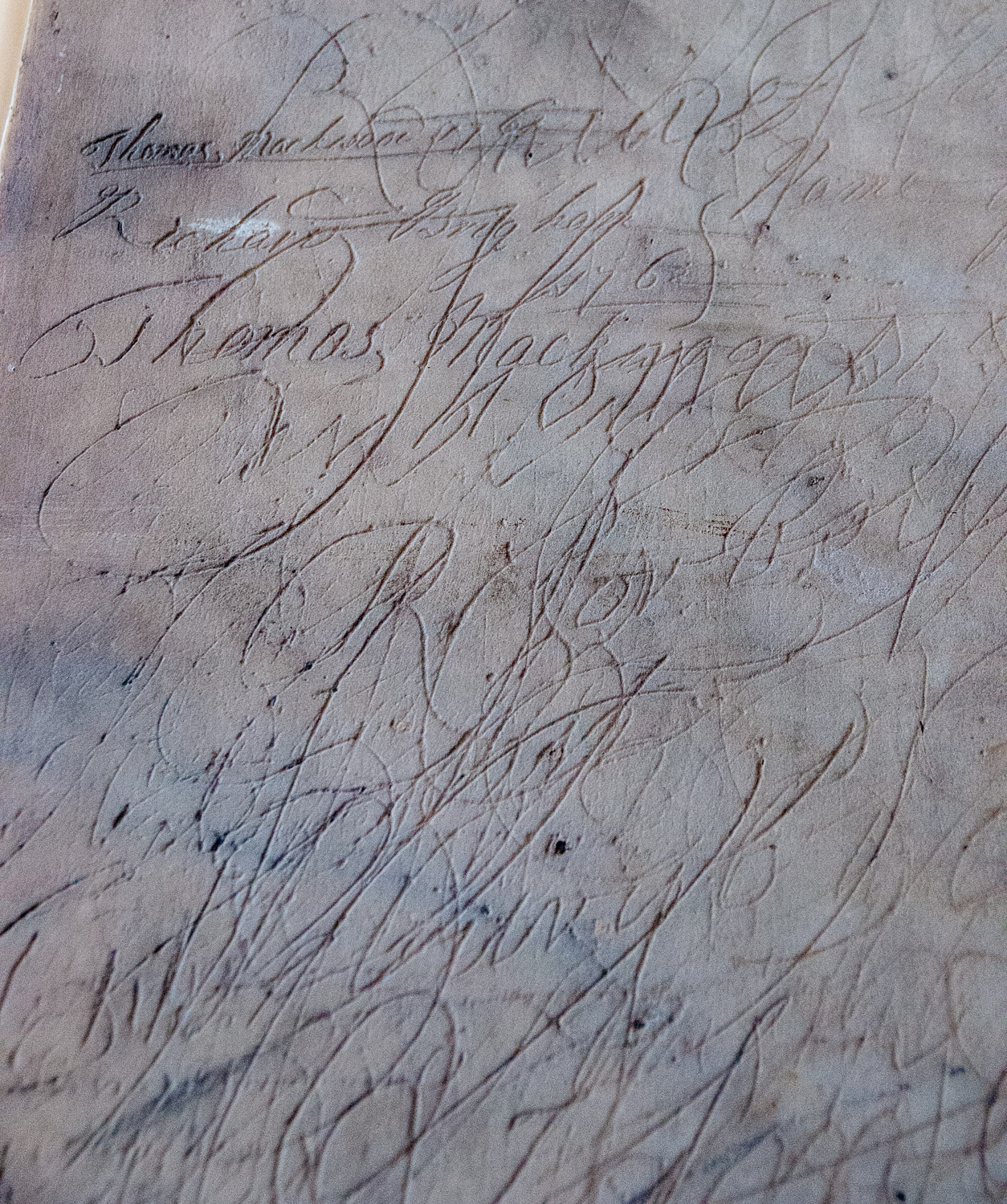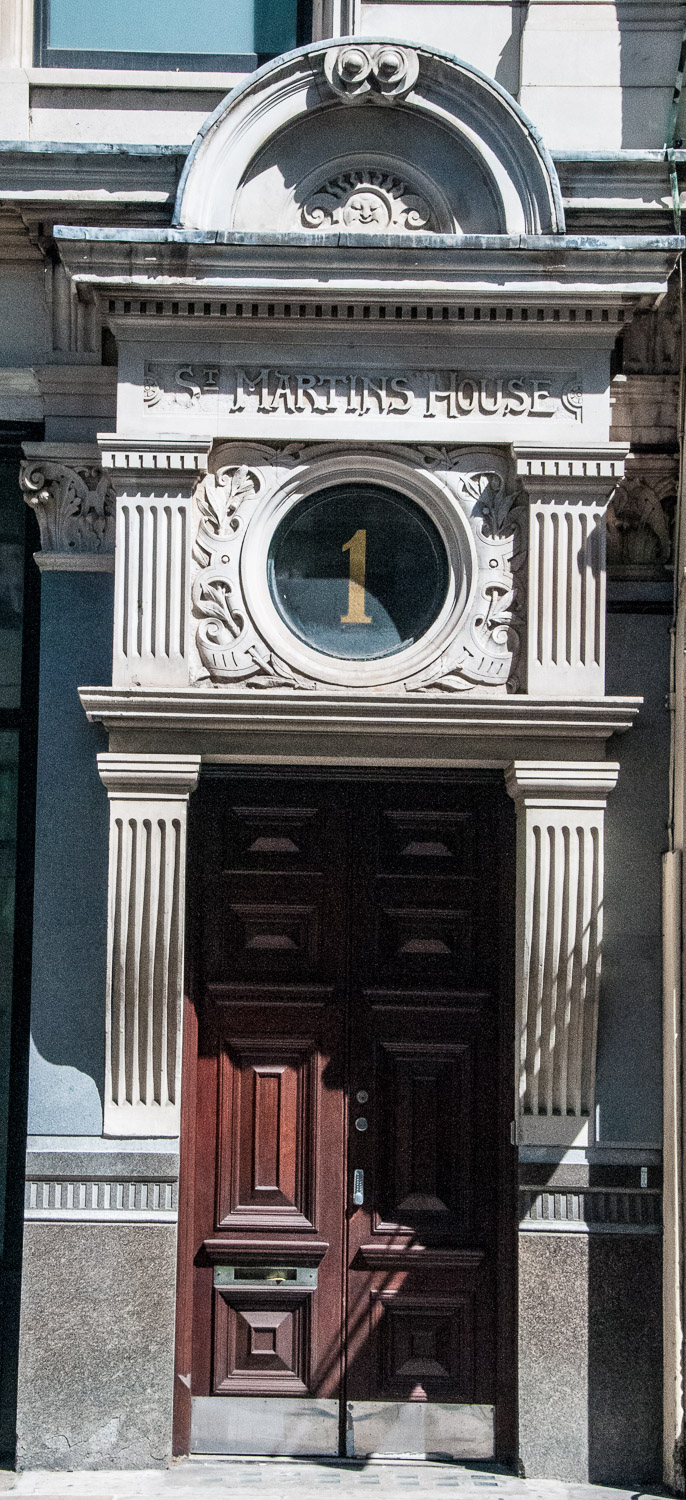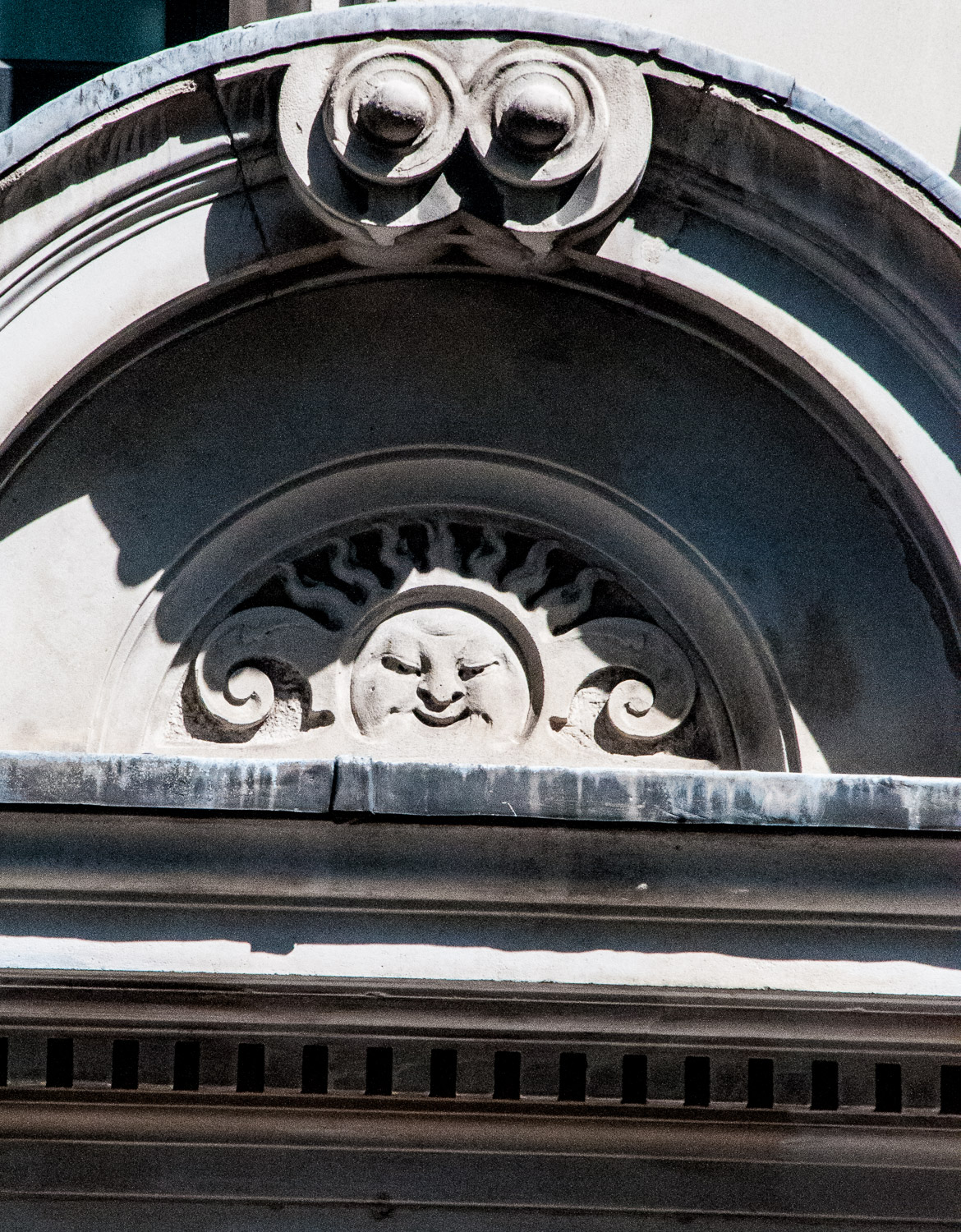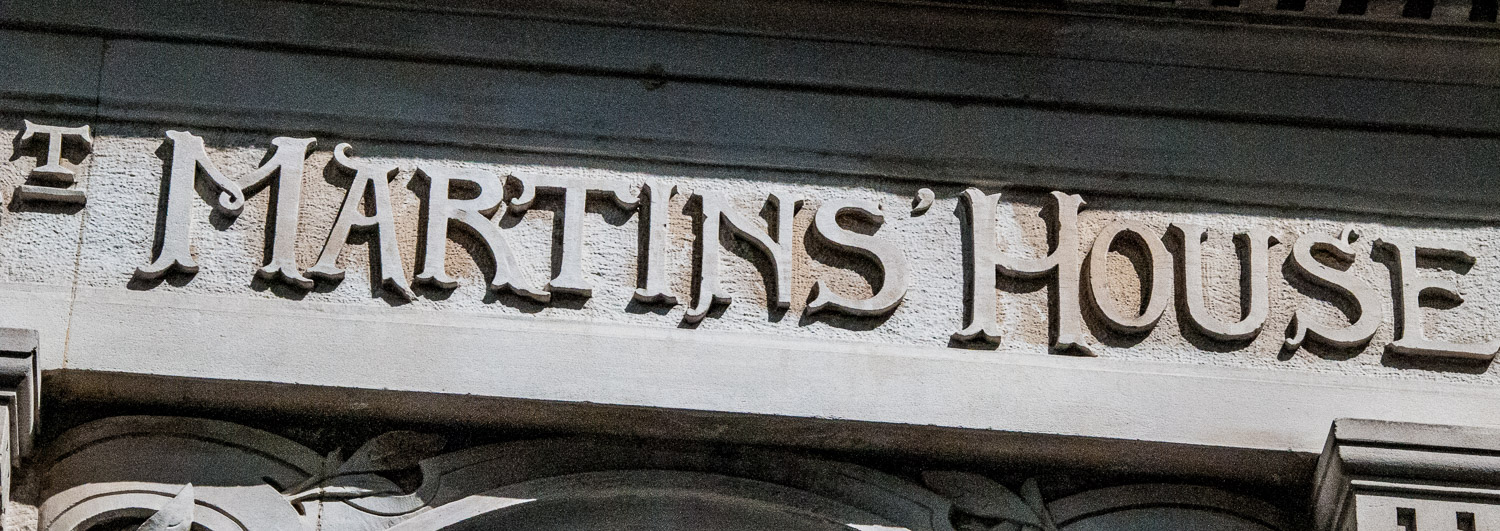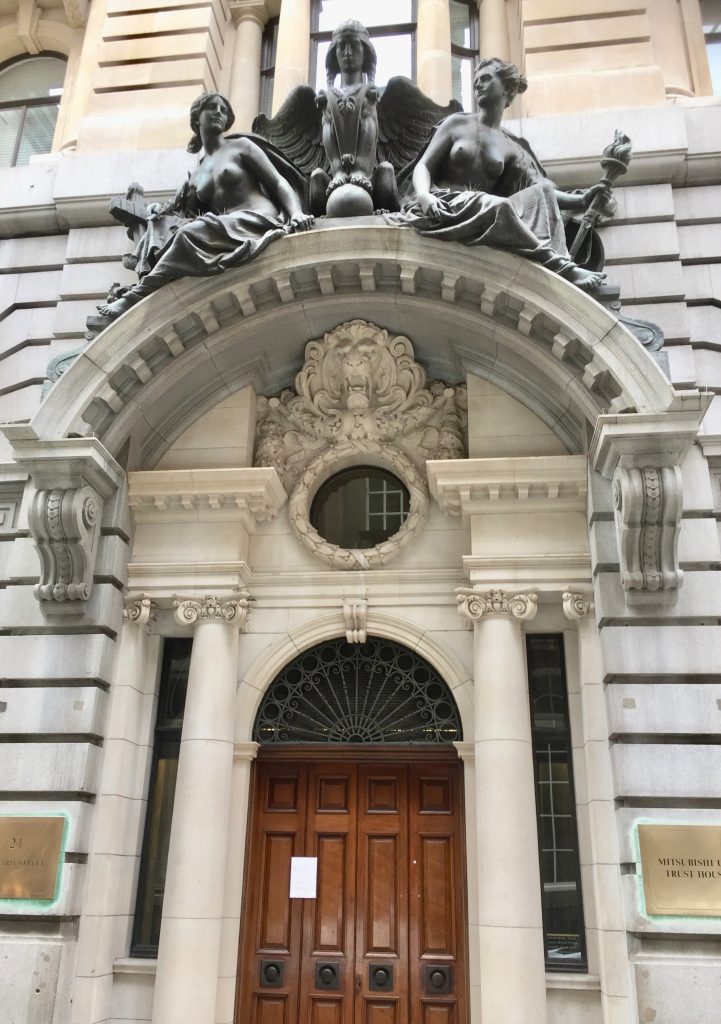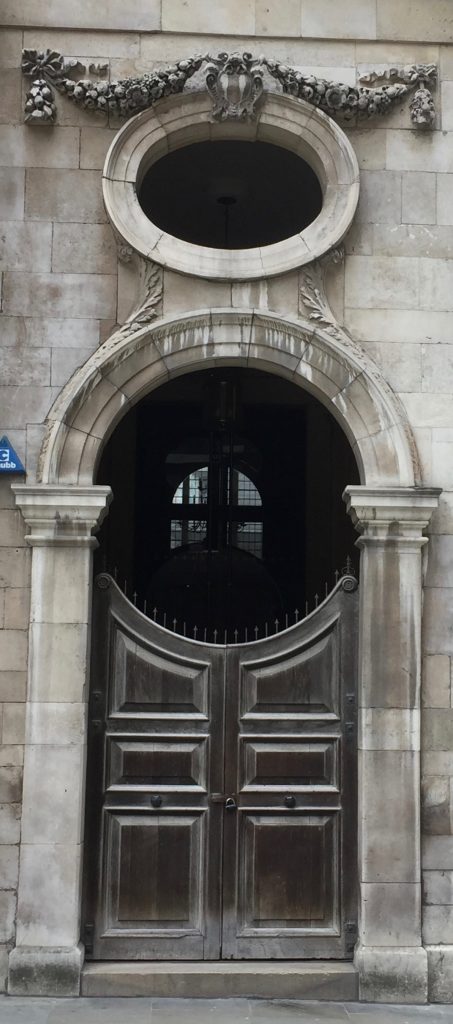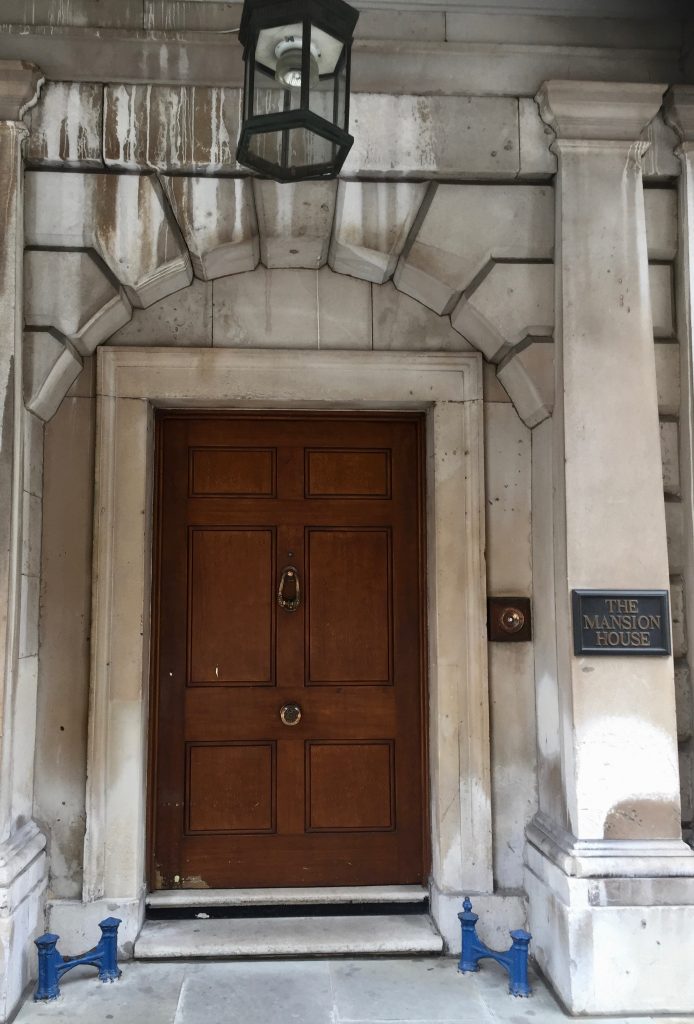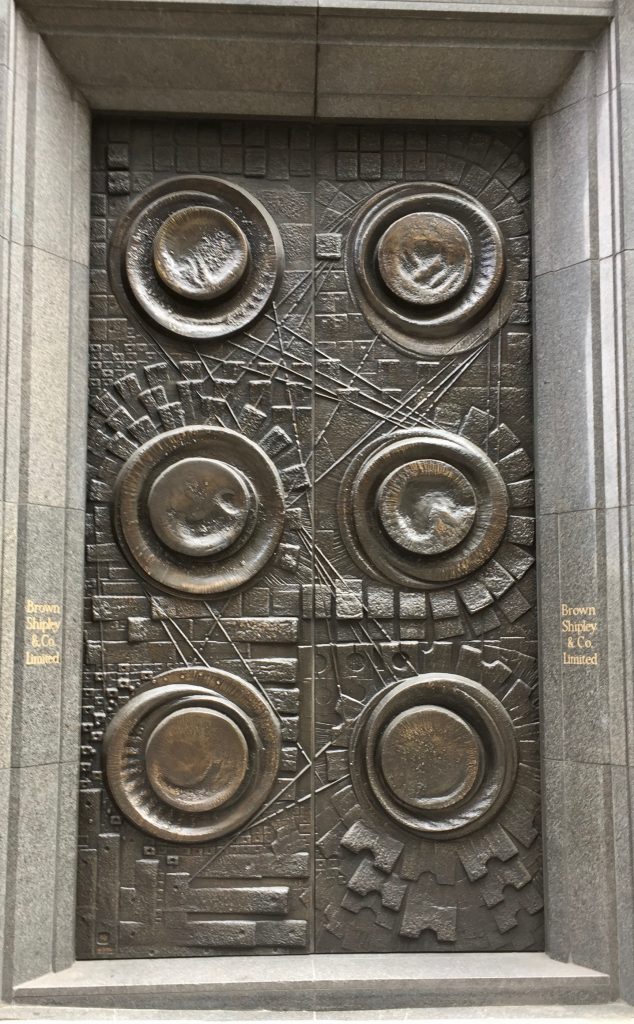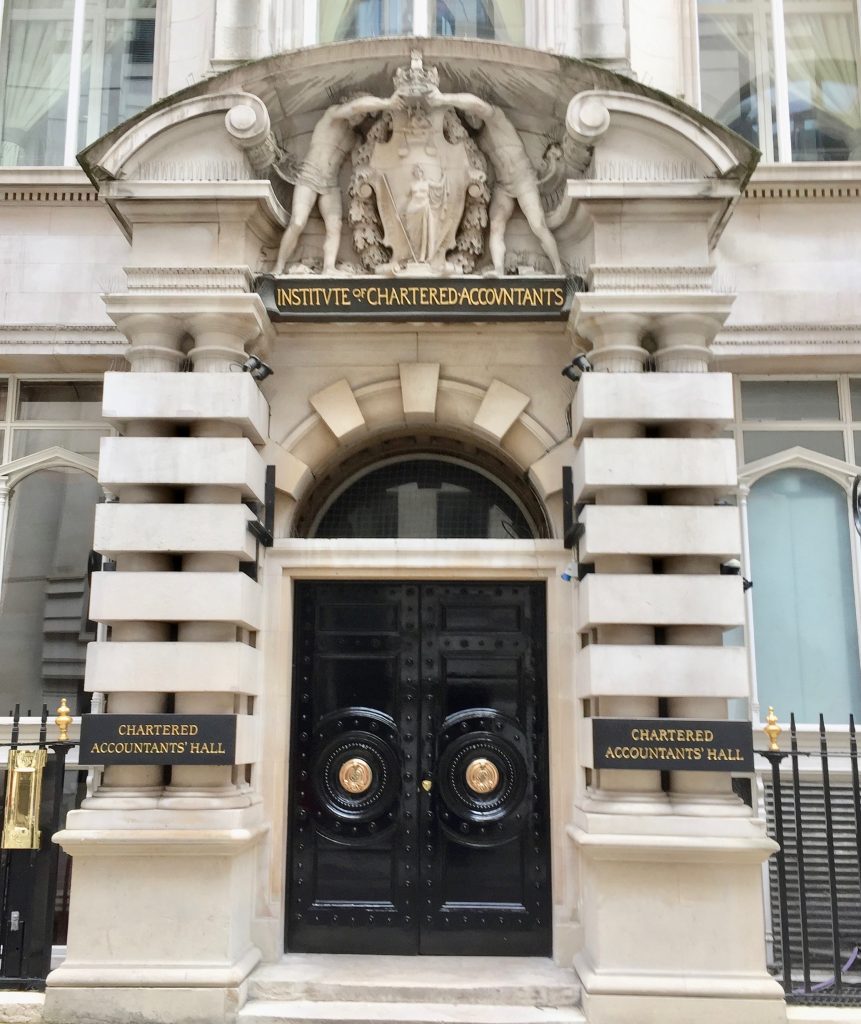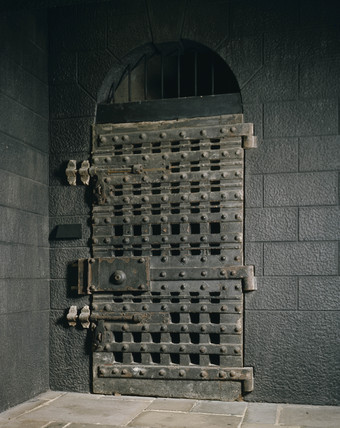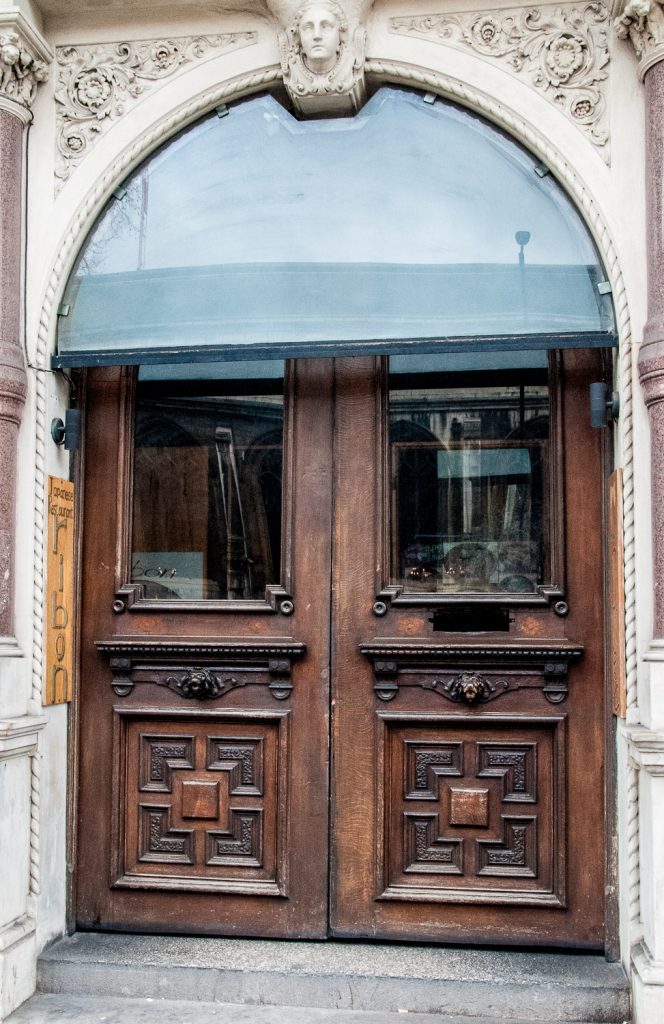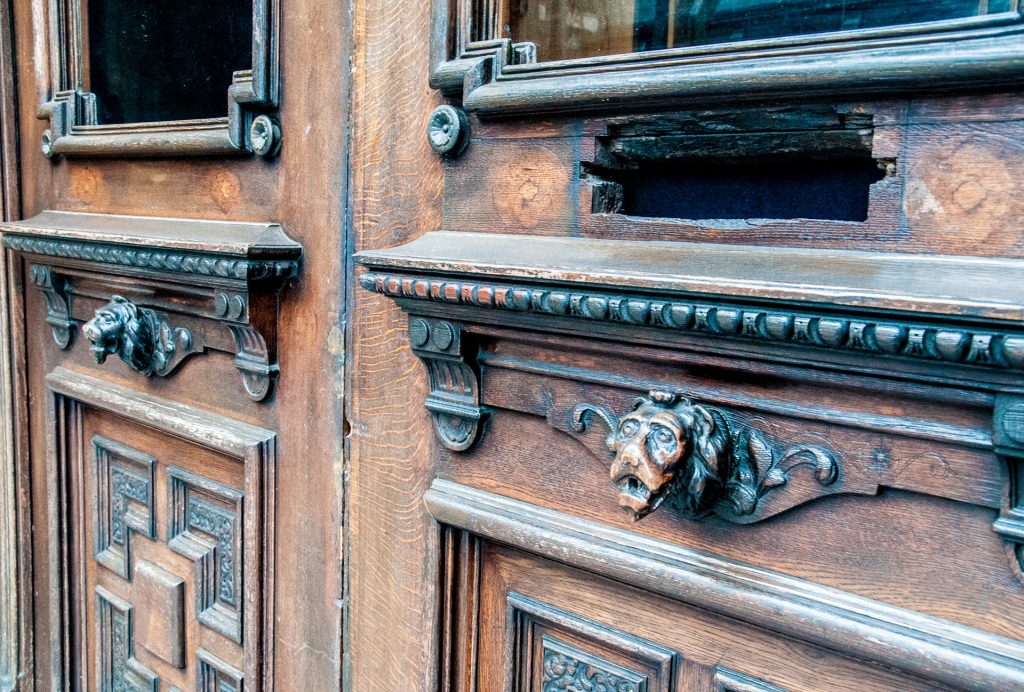It has been many years since I crossed Southwark Bridge and then I wasn’t taking much notice of the buildings in Queen Street Place as I headed towards the bridge and out of the City. When I took the trouble to look last week I was absolutely captivated by this delightful but rather strange Art Deco sculpture by H W Palliser …
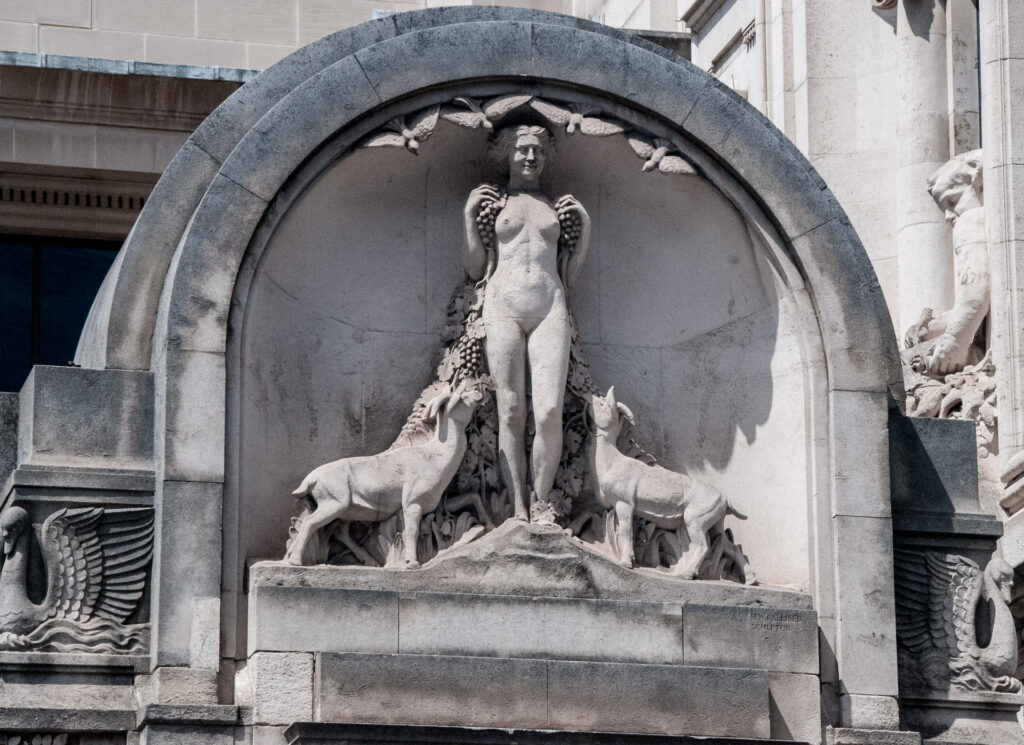
Built by the Vintners’ Company in 1928, at the centre stands a nude woman clutching to herself bunches of grapes which grow on vines at her side. She is a Bacchante, the ‘spirit of the harvest’, and two goats look up at her adoringly as four doves descend above her head. Two swans are also in attendance, reminding us that the Vintners’ Company is one of the three owners of all the swans on the upper Thames, the others being the Dyers and HM the Queen. The model for the woman was Leopoldine Avico who was also, I believe, the model for The Queen of Time above Selfridges.
You get a nice view of Vintners’ Hall from the Bridge …
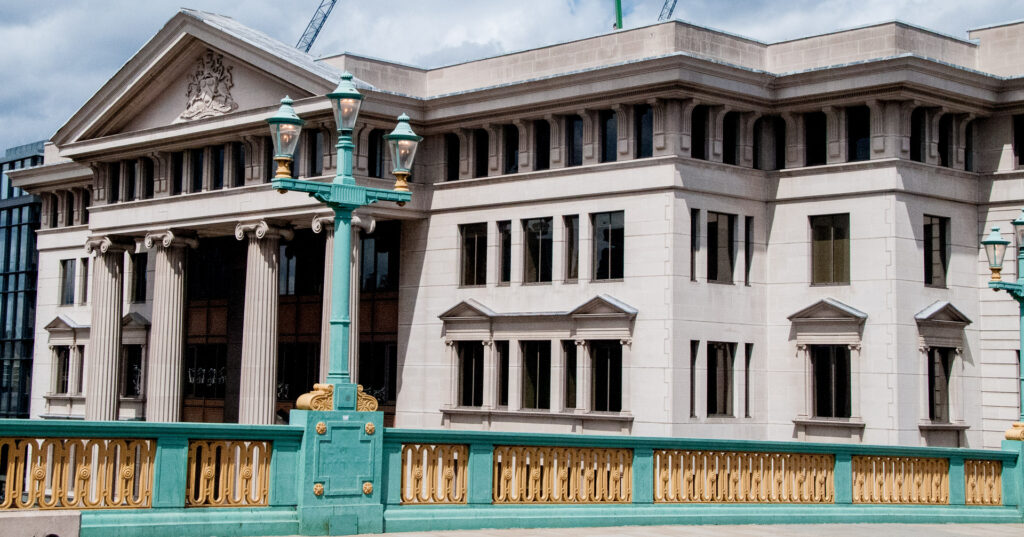
Immediately next door is Thames House (1911-12). It was built for the Liebig Extract of Meat Company whose product was imported from a huge plant in Fray Bentos, Uruguay. There is a clue as to what they made over the central entrance …
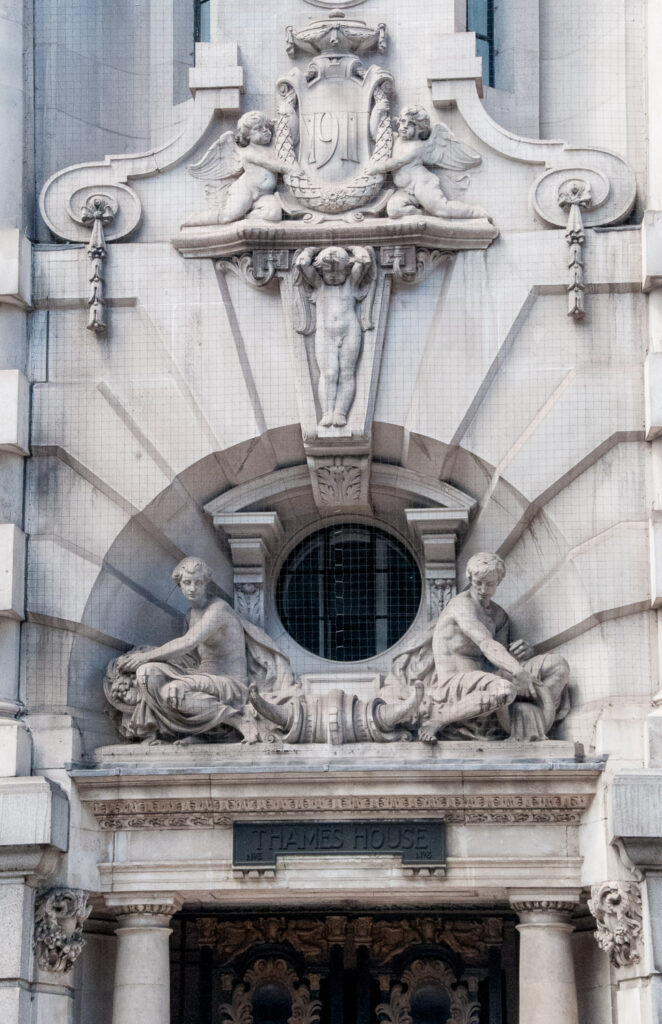
Yes, the two stone horns symbolise the South American herds that provided the meat for the famous and successful Oxo cube (or ‘boiled up cow’, as one commentator rather unkindly called it). The other carvings represent Abundance – a nude youth pours water from a vase and a nude maiden pours flowers from a cornucopia.
In the pediment on the North Pavilion a pair of nude figures hold a strop to tame the winged horse Pegasus, who beats the cloud with his hooves in his struggle …
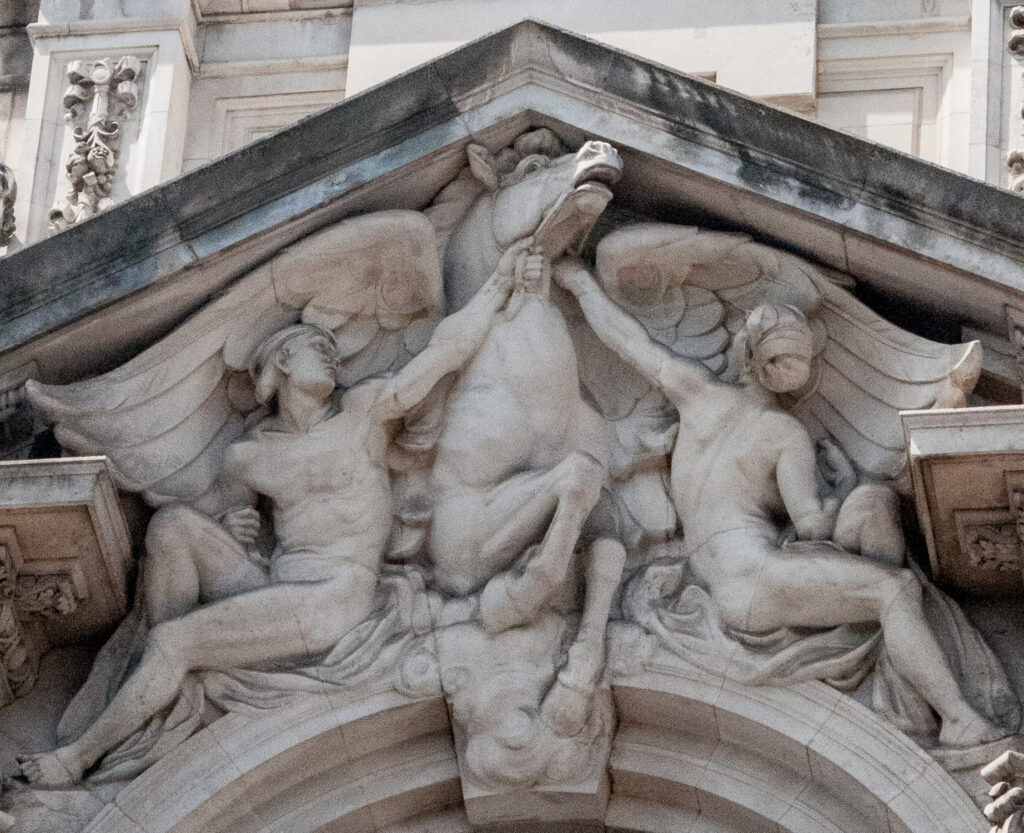
This may allude to the alleged energising qualities of the product.
On the South Pavilion pediment a female figure with fruit and flowers represents the fruits of the land with Neptune, holding his trident and a rope for his net, signifies the fruits of the water …
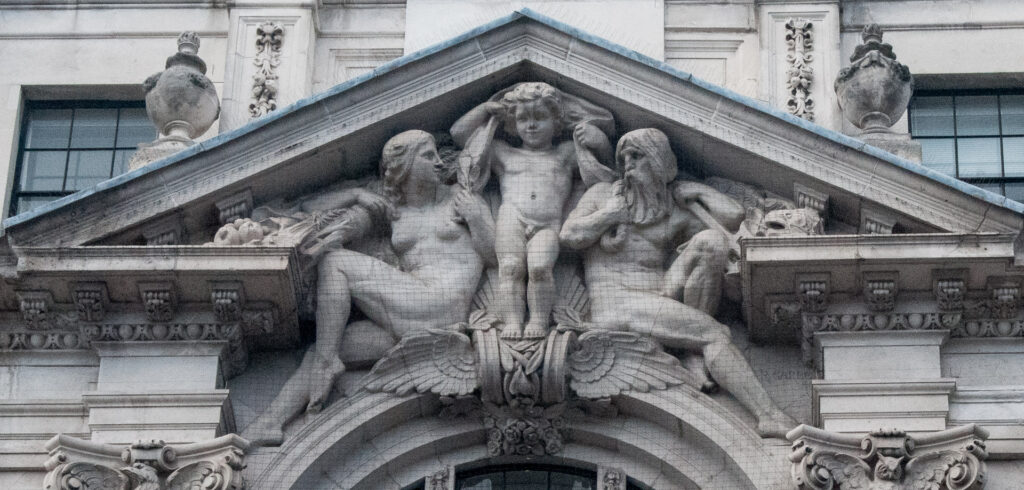
Between them is the figure of a boy standing on two winged wheels symbolising Trade..
Directly over the door is this group …
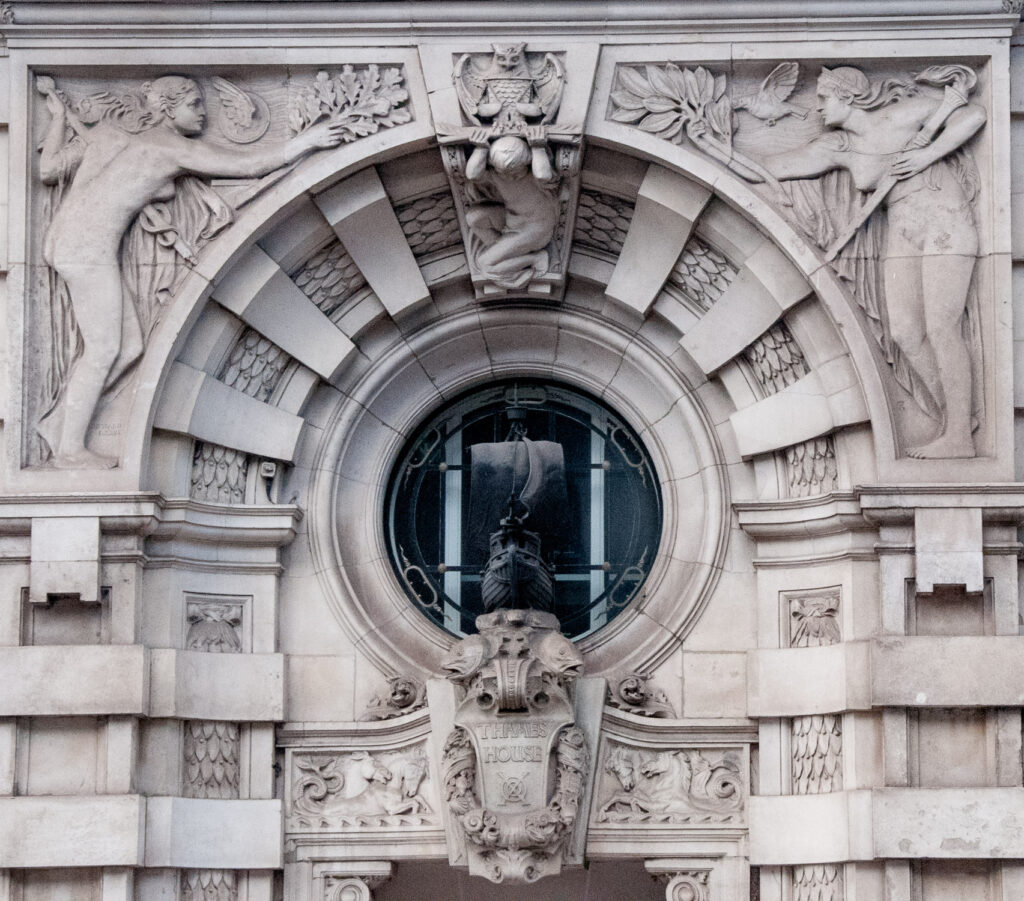
It’s a particularly lavish doorway surmounted by an arch over a circular window or oculus. The spandrels over the arch contain bas reliefs of women denoting Commerce (left) and Wisdom (right), by Richard Garbe. Commerce holds a caduceus and brandishes an oak branch, symbol of endurance and fortitude. Wisdom holds a torch and proffers a laurel branch, symbol of victory. Above, a dove with an olive branch in her beak brings peace.
In front of the window is a bronze galleon by the metalworker William Bainbridge Reynolds …
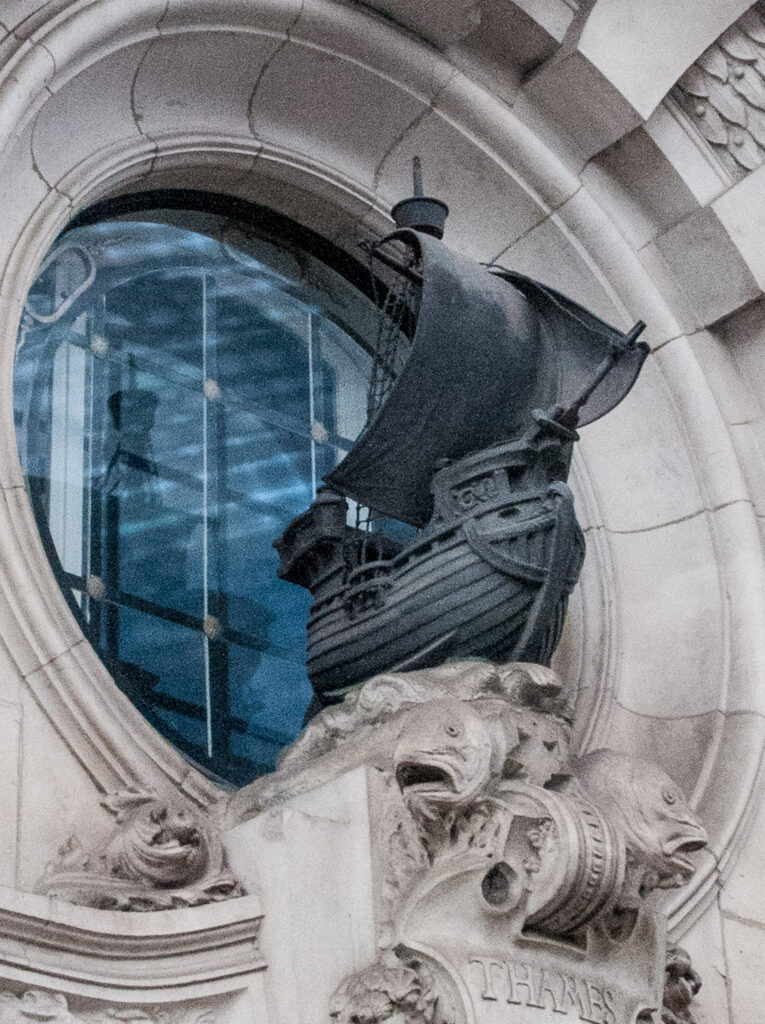
The ship is flanked by some rather grotesque fish which look like they are gasping for air. Maybe Neptune has just caught them.
Here’s the full frontal view …
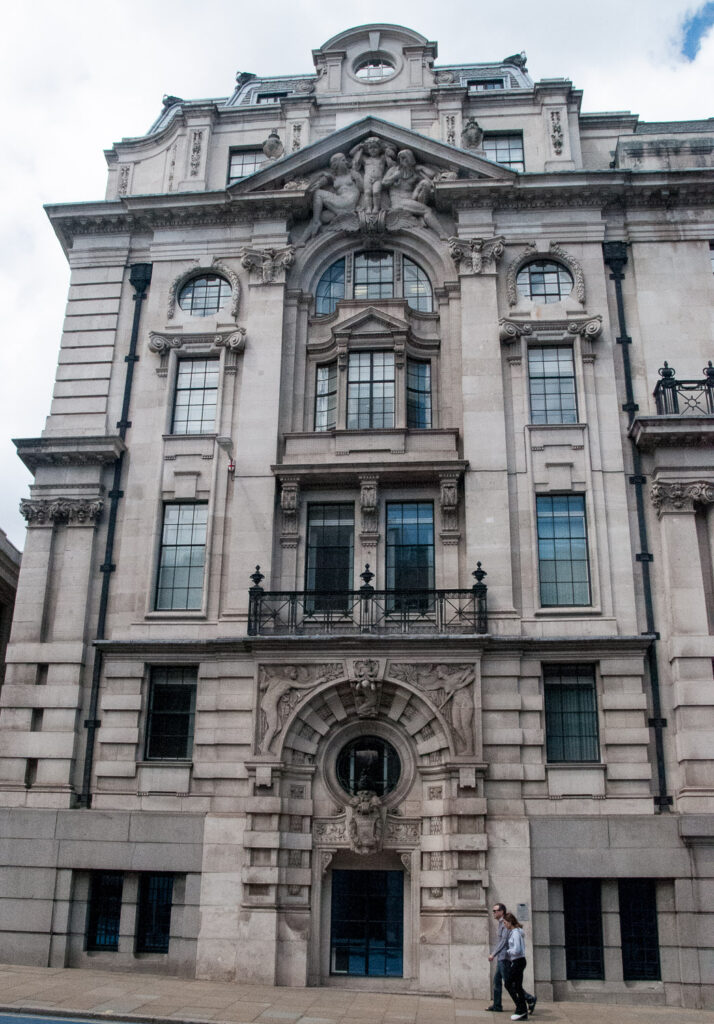
Further along to the north I admired some elaborate doors …
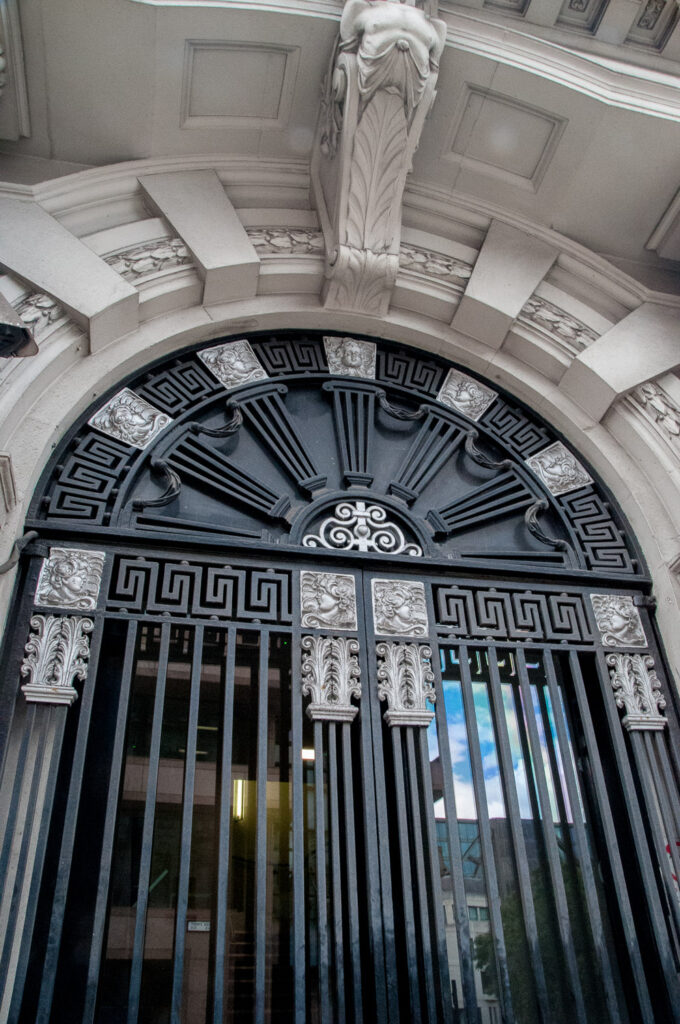
The old doorway to Thames House at the junction with Upper Thames Street is now an entrance to Five Kings House, the interior of the building having now presumably been segmented in some way (EC4R 1QS) …
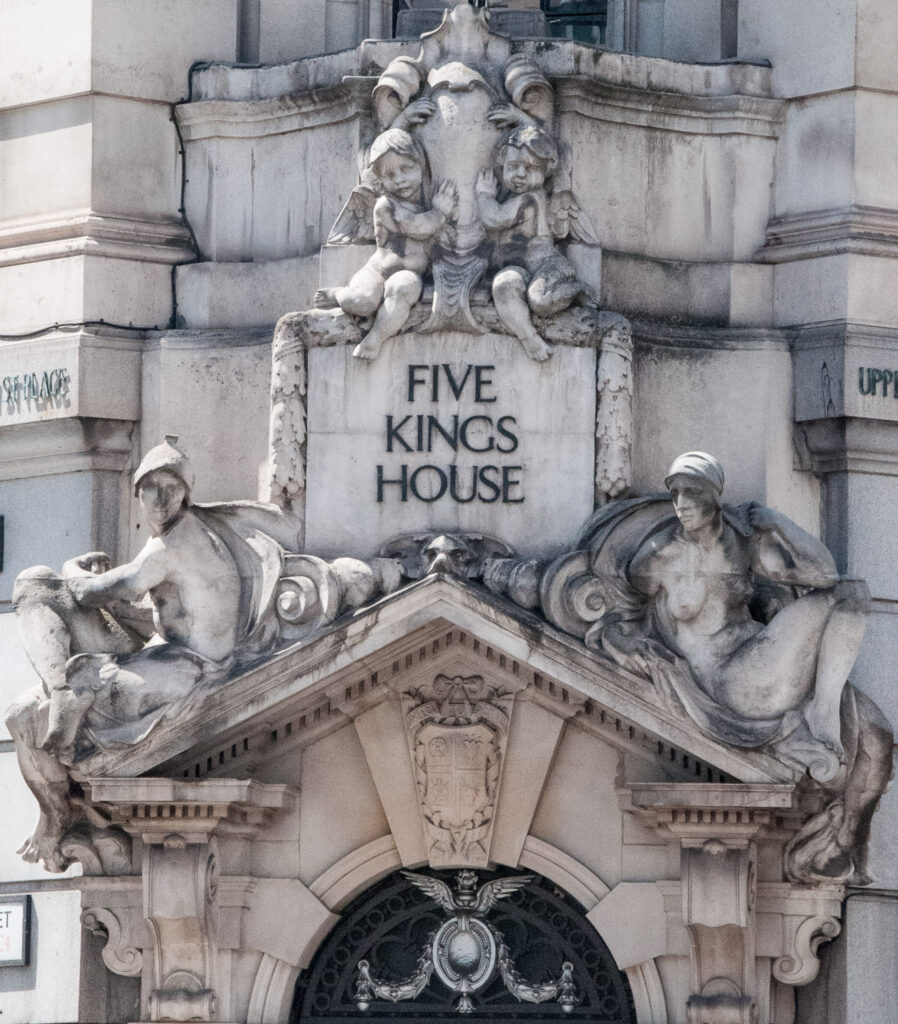
Above the door the male figure, with a helmet and wings at his heels, is clearly Mercury as God of Commerce. It’s not clear what the lady represents – possibly agriculture. Two seated putti support a cartouche
Queen Street Place was a wonderful surprise to me. I have often been asked if I am ever going to run out of things to write about but I can’t imagine this ever happening. The City seems to have something new to offer me every day I walk around it.
Remember you can follow me on Instagram :

